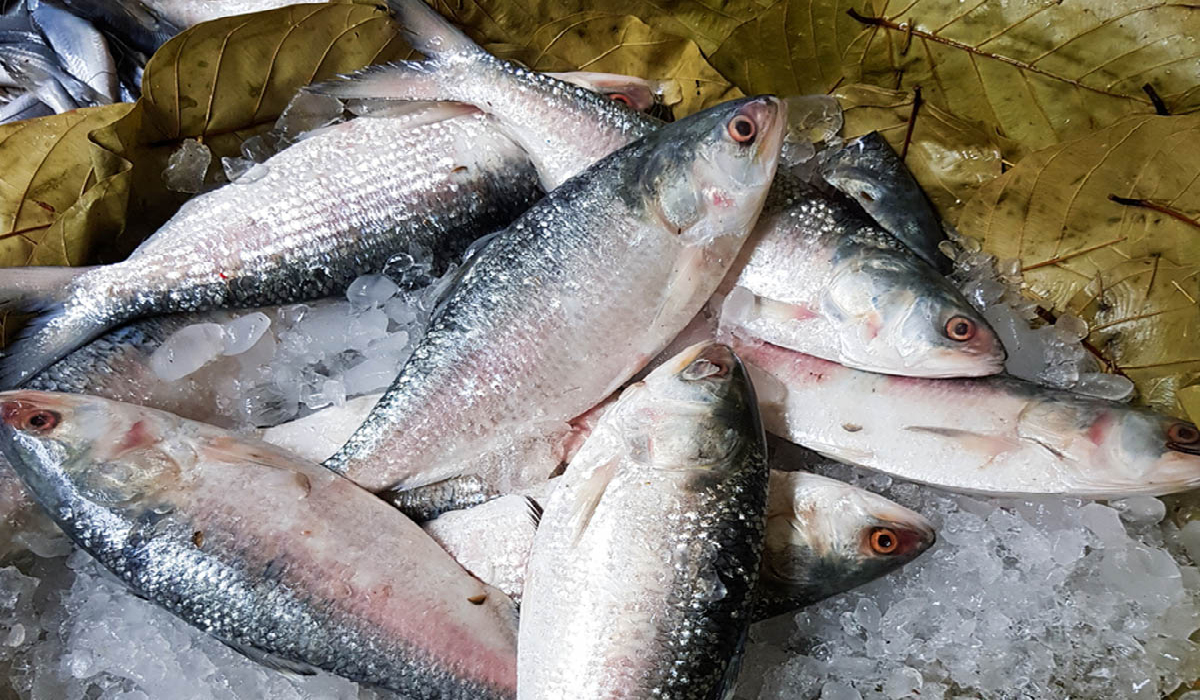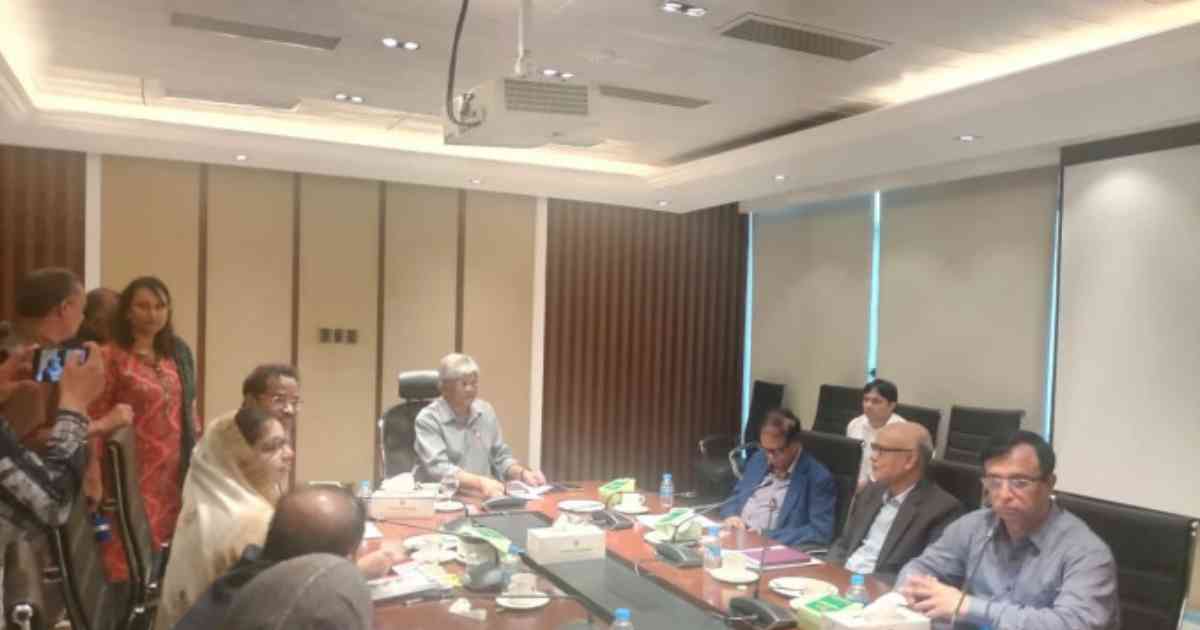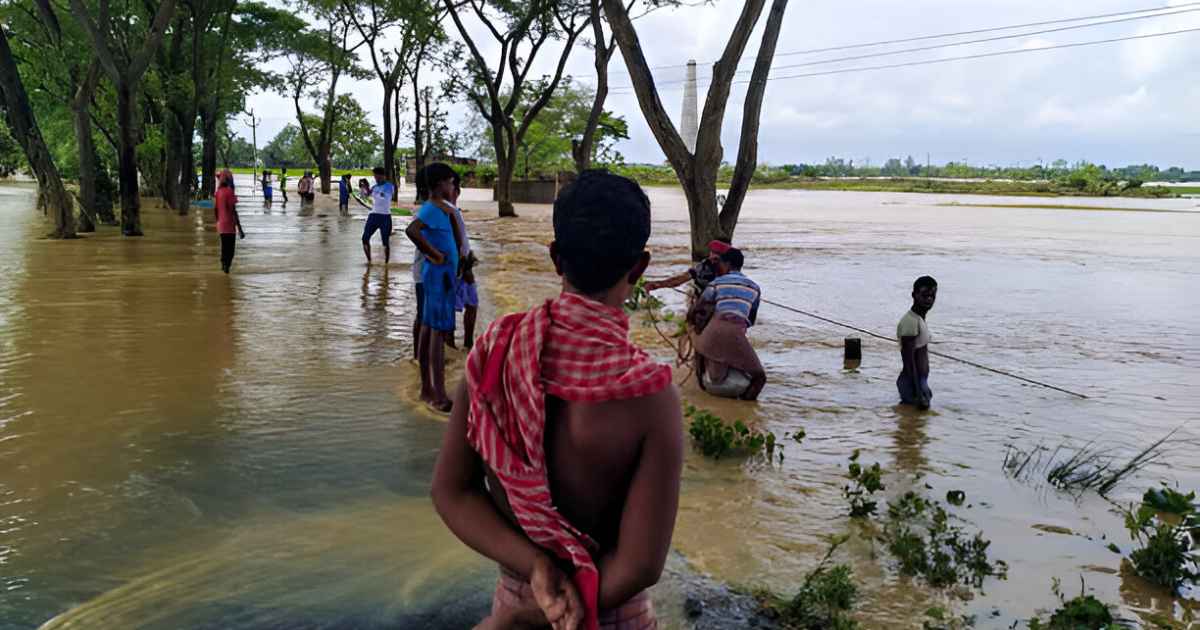Agri Biz
Bangladesh achieved $1.36cr Hilsa export this year yet

Bangladesh government achieved 1.36 crore USD from exporting 1,352 tonnes of Hilsa fish to India this year so far, Fisheries and Livestock Minister SM Rezaul Karim said on Thursday, 6 October.
Hilsa manufacturing has doubled in the last 12 years and the rate of production is now 90pc, he said.
The minister revealed this data while speaking at a press briefing on ‘Mother Hilsa conservation drive 2022’, held at the Secretariat.
On a yearly basis, the government is going to impose a 22-day ban on Hilsa fishing – from October 7 to 28, he said.
Hilsa catching, selling and transporting will remain banned in the 7,000 square km area during the period to ensure the safe spawning of the hugely popular fish during its peak breeding period, he added.
“Those found violating the law will face legal action including imprisonment and fine. None will be spared,” said the minister.
Besides, the government will take strict action against those associated with making any obstruction to the development of Hilsa resources.
During this ban period all activities including catching, selling and transportation of Hilsa will be prohibited in 20 districts including Chandpur, Laxmipur, Noakhali, Feni, Chattogram, Cox’s Bazar, Barishal, Bhola, Patuakhali, Barguna, Pirojpur, Jhalakathi, Bagerhat, Dhaka, Shariatpur, Madaripur, Faridpur, Rajbari, Manikganj and Munshiganj districts, he said.
The ice factories of the districts will be closed as well during the ban, he added.
Meanwhile, fishermen of 18 districts including Gopalganj, Narayanganj, Narsingdi, Kishoreganj, Tangail, Rajshahi, Chapainawabganj, Pabna, Sirajganj, Natore, Bagura, Kurigram, Gaibandha, Brahmanbaria, Khulna, Kushtia, Narail and Jamalpur districts will be allowed to catch other fish except for Hilsa.
Mobile courts will conduct drives day and night in all rivers of 38 districts, fisheries ghat, wholesale markets, chain shops and other markets to discourage people from catching and selling Hilsa fish, he said.
Besides police, local management, Navy personnel, Air Force, Coast Guard, Rab, river police and Fisheries Department will mutually conduct the drives.
Subsequently, dredging work in different rivers will be terminated during this period to ensure smooth breeding of Hilsa, he said.
Hilsa, the national fish of Bangladesh, is known as a certified patented product of Bangladesh.
Nearly 6 lakh people in Bangladesh are involved in catching Hilsa directly while 20-25 lakh people are involved in transporting, selling and other activities indirectly.
Thanks to government initiatives, production of Hilsa have increased to 5.65 lakh metric tonnes in 2020-21 fiscal year while it was 2.98 lakh metric tonnes in 2008-09 FY.
Last year, nearly 51.76pc of mother Hilsa were able to lay eggs during the ban period, boosting production and Hilsa export to India.

Agri Biz
Adviser Dr. Salehuddin Ahmed: Govt Committed to Controlling Commodity Prices

Adviser to the Ministries of Finance and Commerce, Dr. Salehuddin Ahmed, emphasized today that the prices of commodities are closely linked to production and supply, and assured that the government is fully aware of the necessary steps to control these prices.
“We are very conscious of issues related to trade and commerce. My colleague, Dr. Wahiduddin Mahmud, who oversees the Ministry of Planning, is also focused on these matters. We are accustomed to handling such challenges,” Dr. Salehuddin remarked in response to reporters’ questions at the Ministry of Finance in Bangladesh Secretariat.
Earlier in the day, Dr. Salehuddin met with Edimon Ginting, the Country Director of the Asian Development Bank (ADB), at his office in the Economic Relations Division (ERD).
He noted that the government is also attentive to the impacts of imported inflation, stressing that only essential goods should be imported. “We must ensure that the additional burden on the general population is minimized and work to further reduce existing pressures,” he added.
Dr. Salehuddin also mentioned that the central bank governor is well-informed about the causes of rising inflation, which is why strict market monitoring is in place.
Addressing another question, he mentioned that the Bangladesh Bank Governor is actively managing the issue of increasing foreign currency reserves, and this topic will be raised in the upcoming annual meetings of the World Bank and the IMF.
When asked about the outcomes of his meeting with the ADB, Dr. Salehuddin expressed that development partners, particularly the World Bank and ADB, remain positive about continuing their operations in Bangladesh. He noted that the ADB and other partners have assured him of their ongoing cooperation in the development sector.
He further highlighted that the development partners are eager to advance pipeline projects in alignment with the government’s priorities.
Regarding the possibility of delaying Bangladesh’s graduation from Least Developed Country (LDC) status beyond 2026, Dr. Salehuddin acknowledged the complexity of the issue, noting that it involves various conditions and the involvement of multiple agencies, including the Ministry of Finance, Ministry of Commerce, and the National Board of Revenue (NBR). He assured that the government is closely monitoring the developments.
When asked about the demands from government employees for ration provisions, Dr. Salehuddin stated that both public and private sector employees are equally important, emphasizing the government’s priority to ensure that everyone can lead a decent life. “We are committed to ensuring that everyone benefits equally,” he said.
On his new responsibilities with the Ministry of Commerce, Dr. Salehuddin underscored the importance of local and international trade as key pillars of the economy. He assured that the government would strive to create a business-friendly and corruption-free environment in all business operations.
Recognizing the significant role of trade, commerce, and the supply chain in curbing inflation, Dr. Salehuddin promised prompt government action to address these issues.
He also mentioned plans to meet with the Ministry of Commerce and its subordinate bodies to tackle pressing matters. “You can be assured that I will do my utmost and take necessary steps swiftly,” he concluded.
Agri Biz
Prices of daily essentials to come down gradually: Finance adviser

The prices of daily essentials will come down gradually, Finance and Planning Adviser Dr Salehuddin Ahmed said today (14 August).
“Common people will get relief to some extent. But it can’t be said that the prices will decrease overnight,” he told reporters at the conference room of the Finance Ministry.
Responding to a question about syndicate in the market, he said, “There is nothing that has not come to our notice, I have some ideas, the governor also knows about it.
“The secretaries here are also very experienced and I told them that you will tell me everything without fear.”
Asked if any step will be taken regarding corruption, he said, “There was no discussion on the issue today.”
Responding to another question he said, “Action against corruption is an ongoing process, some processes need to be followed to punish someone. Some measures and action have already been taken.”
Responding to a question about the specific instructions given today, the finance adviser said the Industries and Agriculture ministries will do whatever needs to be done in the field of production, such as fertiliser supply and market management.
Agri Biz
Remal Ravages Crops in Khulna Agricultural Zone, Losses Estimated at Tk 180.24cr

Cyclone Remal has inflicted severe damage on crops across 45,590 hectares of land in the Khulna agricultural zone, causing losses worth Tk 180.24 crore, as reported by the Directorate of Agricultural Extension (DAE) in Khulna.
According to Mohon Kumar Ghosh, Additional Director of the DAE Khulna Zone, 44,148.95 hectares of farmland suffered partial damage, while 1,450.90 hectares were completely destroyed in the four affected districts: Khulna, Bagerhat, Satkhira, and Narail.
In Khulna district, Cyclone Remal affected 3,565.65 hectares of cropland belonging to 13,796 farmers, resulting in losses estimated at Tk 42.98 crore. Bagerhat district witnessed damage to 12,611.50 hectares of cropland from 39,465 farmers, with losses amounting to Tk 97.36 crore. In Satkhira, 659.7 hectares of cropland owned by 12,156 farmers were affected, incurring losses of Tk 24.42 crore. Narail saw damage to 28,763 hectares of cropland from 8,620 farmers, with estimated losses of Tk 15.47 crore.
Speaking to BSS, Mohon Kumar Ghosh highlighted the extensive damage caused by Cyclone Remal to the southern coastal areas, particularly croplands. The affected crops include jute, Aush seedbed, aush cultivated land, groundnut, chili, bona Aman, ginger, turmeric, summer melon, litchi, mango, papaya, betel nut, sugarcane, banana, winter maize, sesame, and various Kharif season vegetables such as tomato, mung bean, and banana.
Following directives from Prime Minister Sheikh Hasina, efforts are being made to support the affected farmers. “We are working tirelessly to help the helpless farmers recover their losses,” Ghosh said, adding that the government is providing incentives and regular counseling and supervision at the field level to aid recovery.
In the coming months, the affected farmers will continue to receive various forms of government support to mitigate the impact of Cyclone Remal.


You must be logged in to post a comment Login